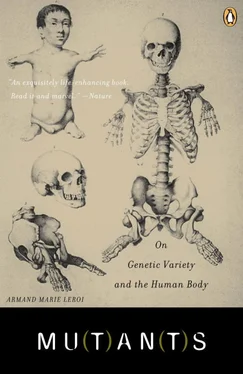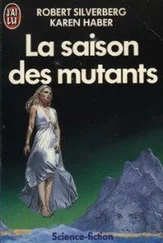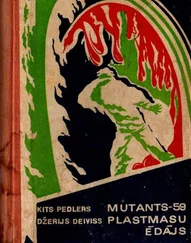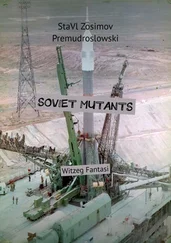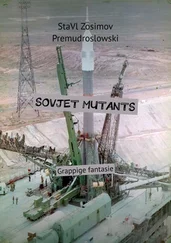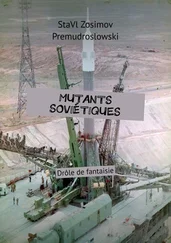Linnaeus, C. 1758, 1939. Systema naturae 10th edition. British Museum, London
Linnaeus, C. 1761. Fauna svecica. Stockholm
Lloyd, A.T. 1986. Pussy Cat, Pussy Cat, where have you been? Natural History 95(7): 46–52
Logroño, R. et al. 1997. Heteropagus conjoined twins due to fusion of two embryos: report and review. American Journal of Medical Genetics 73: 239–43
Lopez-Bermejo, A. et al. (2000). Genetic defects of the growth hormone-insulin-like growth factor axis. Trends in Endocrinology and Metabolism 11:39–49
Lufkin, T. et al. 1991. Disruption of the Hox-1. 6 (Hoxa1) homeobox gene results in defects in a region corresponding to its rostral domain of expression. Cell 66: 1105–19
Lupu, F. et al. 2001. Roles of growth hormone and insulin-like growth factor 1 in mouse postnatal growth. Developmental Biology 229: 141–62
McBride, W.B. 1961. Thalidomide and congenital abnormalities Lancet ii: 1358
McEwan, C. et al. 1997. (eds) Patagonia: natural history, prehistory and ethnography at the uttermost ends of the earth. British Museum, London
Mackenbach, J.P. 1991. Narrowing inequalities in children’s height. Lancet 338: 764
McLachlan, J. 1994. Medical embryology. Addison-Wesley, Wokingham
McLaren, A. 1990. What makes a man a man? Nature 346: 216–17
McMahon, J.A. et al. 1998. Noggin-mediated antatonism of BMP signalling is required for growth and patterning of the neural tube and somite. Genes and Development 12: 1438–52
McMullen, G. and K. Pearson. 1913. On the inheritance of the deformity known as split-foot or lobster-claw. Biometrika 9: 381–90
McPherron, A.C. and SJ. Lee. 1997. Doubling muscle in cattle due to mutations in the myostatin gene. Proceedings of the National Academy of Sciences, USA 94: 12457–61
McPherron, A.C. et al. 1997. Regulation of skeletal muscle mass in mice by a new TGF-Beta superfamily member. Nature 387: 83–90
Maden, M. 1999. Heads or tails? Retinoic acid will decide. Bioessays 21: 809–12
Maeder, T. 1998. A few hundred people turned to bone. The Atlantic , February, (two parts)
Manoiloff, E.O. 1931. A rare case of hereditary hexadactylism. American Journal of Physical Anthropology 15: 503–8
Manouvrier-Hanu S. et al. 1999. Genetics of limb anomalies in humans. Trends in Genetics 15: 409–17
Mansholt, U.J. 1987. The increase in the height of Dutchmen and the attraction of tennis. Nederlands Tijdschrift voor Geneeskunde 131: 376
Mark, M. et al. 1993. Two rhombomeres are altered in Hoxa-1 mutant mice. Development 119: 319–38
Maroteaux, P. 1995. Toulouse-Lautrec’s diagnosis. Nature Genetics 11: 362
Maroteaux, P. and M. Lamy. 1965. The malady of Toulouse Lautrec. JAMA, Journal of the American Medical Association 191: 111–13
Marshall, H.K. and H.I. Harder. 1958. Testicular feminising syndrome in male pseudohermaphrodite: report of two cases in identical twins. Obstetrics and Gynecology 12: 284–93
Martin, E. 1880. Histoire des monstres. C. Reinwald, Paris
Martin, G. and J. Oshima. 2000. Lessons from human progeroid syndromes. Nature 408: 263–6
Martinez-Frias, M.-L. 1993. Another way to interpret the description of the Monster of Ravenna of the sixteenth century. American Journal of Medical Genetics 49: 362
Mascie-Taylor, C.G.N and J.L. Boldsen. 1985. Regional and social analysis of height variation in a contemporary British sample. Annals of Human Biology 12: 315–24
Mathon, N.F. et al. 2001. Lack of replicative sensecence in normal rodent glia. Science 291: 872–5
Mayor, A. 2000. The first fossil hunters. Princeton University Press, Princeton, N.J.
Medawar, P.B. 1952. An unsolved problem in biology. H. K. Lewis. London
Melanchthon, P. and M. Luther. 1523 (1823). Interpretation of two horrible monsters [ Deuttung der czwo grewlichï Figuren, etc. ]
Merimee, T.J. et al. 1981. Dwarfism in the pygmy. New England Journal of Medicine 305: 965–8
Merimee, T.J. et al. 1987. Insulin-like growth factors in pygmies: the role of puberty in determining final stature. New England Journal of Medicine 316: 906–11
Merke, F. 1993. History and iconography of endemic goitre and cretinism. MTP Press, Lancaster
Merlo, G.R. et al. 2002. Mouse model of split hand/foot malformation type 1. Genesis 33: 97–101
Meyers, E.N. and G.R. Martin. 1999. Differences in left-right axis pathways in mouse and chick: functions of FGF8 and SHH. Science 285: 403–6
Miller, R. and S. Austad. 1999. Large animals in the fast lane. Science 285:199
Mills, A.A. et al. 1999. P63 is a P53 homologue required for limb and epidermal morphogenesis. Nature 398: 708–13
Mittwoch, U. 1973. Genetics of sex differentiation. Academic Press, N.Y.
Monreal, A.W. 1999. Mutations in the human homologue of mouse dl cause autosomal recessive and dominant hypohidrotic ectodermal dysplasia. Nature Genetics 22: 366–9
Montaigne, M. de. 1580 (1958). Essays (trans. J.M. Cohen). Penguin Books, Harmondsworth, UK
Montaigne, M. de. 1603 (1998). Florio’s translation of Montaigne’s essays. B. R. Schneider (ed.), Renascence Editions, University of Oregon
Moon, A.M. and M.R. Capecchi. 2000. Fgf8 is required for outgrowth and patterning of the limbs. Nature Genetics 26: 455–9
Morin, A. 1996. La teratologic de Geoffroy Saint-Hilaire á nos jours. Bulletin de l’Association des Anatomistes 80: 17–31
Morishima, A. et al. 1995. Aromatase deficiency in male and female siblings caused by a novel mutation and the physiological role of estrogens. Journal of clinical endocrinology and metabolism 80: 3689–98
Mortlock, D.P. and J.W. Innis. 1997. Mutation of Hox a-13 in hand-foot-genital syndrome. Nature Genetics 15: 179–80
Mortlock, D.P. et al. 1996. The molecular basis of hypodactyly (Hd): a deletion in Hox a-13 leads to arrest of digital arch formation. Nature Genetics 13: 284–8
Moskovitz, E. 1987. By the grace of the devil. Rotem, Ramat-Gan, Israel
Muenke M. and PA. Beachy 2000. Genetics of ventral forebrain development and holoprosencephaly. Current Opinion in Genetics and Development 10: 262–9
Mundlos, S. 1999. Cleidocranial dysplasia: clinical and molecular genetics. Journal of Medical Genetics 36: 177–82
Mundlos, S. et al. 1997. Mutations involving the transcription factor CBFAi cause cleiodocranial dysplasia. Cell 89: 773–9
Muragaki, Y. et al. 1996. Altered growth and branching patters in synpoly-dactyly caused by mutations in Hox d-13. Science 272: 548–51
Mya-Tu, M. et al. 1962. Tarong pygmies in North Burma. Nature 195: 131–2
Mya-Tu, M. et al. 1966. The Tarons in Burma. Burma Medical Research Institute, Rangoon. Special Report Series No. 1
Nanni, L. et al. 1999. The mutational spectrum of the sonic hedgehog gene in holoprosencephaly: SHH mutations cause a significant proportion of autosomal dominant holoprosencephaly. Human Molecular Genetics 8: 2479–88
Nanni, L.et al. 2001. SHH mutation is associated with solitary median maxillary central incisor: a study of 13 patients and review of the literature. Journal of Medical Genetics 102: 1–10, 2001
Naski, M.C. et al. 1996. Graded activation of fibroblast growth factor receptor 3 by mutaitons causing achondroplasia and thanatophoric dysplasia. Nature Genetics 13: 233–7
Читать дальше
